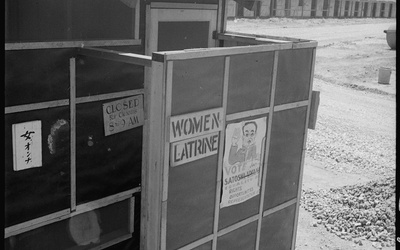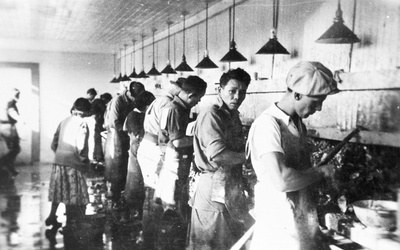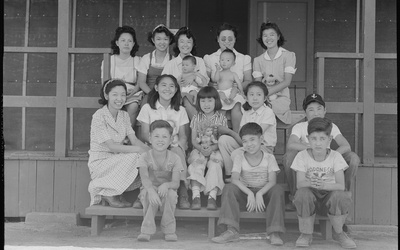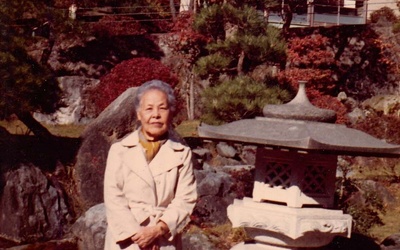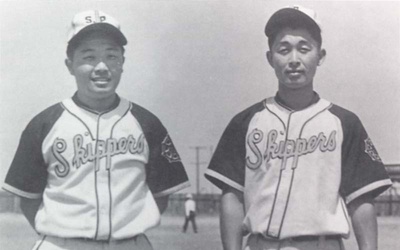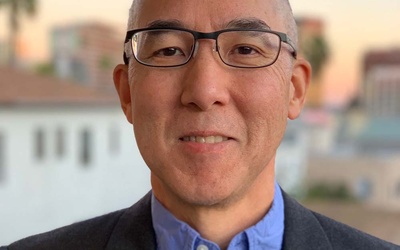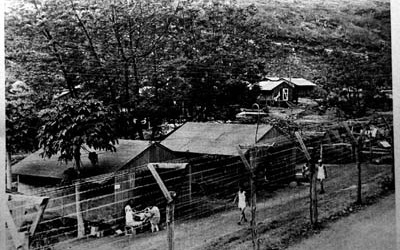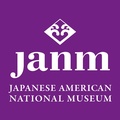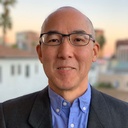
Brian Niiya
Brian Niiya is a public historian specializing in Japanese American history. Currently the content director for Densho and editor of the online Densho Encyclopedia, he has also held various positions with the UCLA Asian American Studies Center, the Japanese American National Museum, and the Japanese Cultural Center of Hawai'i that have involved managing collections, curating exhibitions, and developing public programs, and producing videos, books, and websites. His writings have been published in a wide range of academic, popular, and web-based publications, and he is frequently asked to give presentations or interviews on the forced removal and incarceration of Japanese Americans during World War II. A "Spoiled Sansei" born and raised in Los Angeles to Nisei parents from Hawai'i, he lived in Hawai'i for over twenty years before returning to Los Angeles in 2017 where he is currently based.
Updated May 2020
Stories from This Author
What An Ungodly Place To Meet: Tales From Camp Toilets
June 22, 2018 • Brian Niiya , Denshō
In stories of the forced removal and incarceration, certain types of stories recur. There is the shock of Pearl Harbor and the subsequent exclusion orders, the preparations for removal including human “vultures” who come by to buy household goods for a fraction of their value, and Issei women who break dishes rather then sell them at such prices. Once at the concentration camp, there is dust, extreme temperatures, barbed wire fences and guard towers, spartan living conditions (sometimes in converted …
Ship Jumpers, Border Crossers, and Other "Illegal" Issei Immigrants
Jan. 12, 2018 • Brian Niiya , Denshō
Here at Densho, we often draw parallels between the forced removal and subsequent incarceration of Japanese Americans from the West Coast and the treatment of marginalized groups today. Sadly, the need to do this has only increased in recent months. However the current crackdown on and scapegoating of immigrants—particularly those deemed “illegal”—should remind us about an earlier period of Japanese American history: that of the Issei pioneers who came to the U.S. over one hundred years ago and laid the …
Remembering the Manzanar Riot
Dec. 22, 2017 • Brian Niiya
December 5, 2017 marks the 75th anniversary of the best known instance of mass unrest in the one of the WWII concentration camps. The Manzanar Riot, as it was called, was also one of a handful of times in which military police killed inmates in the camps and was a key event in leading the War Relocation Authority down the road of the “loyalty questionnaire” and segregation. Coming one year after the attack on Pearl Harbor, sensationalist coverage of the …
Common Myths of WWII Incarceration: “More Than Half Were Children”
July 11, 2016 • Brian Niiya , Denshō
“Half or more of those removed from the West Coast and incarcerated in concentration camps were children.” In recent years, this has to have become the most common misstatement of fact about the Japanese American wartime incarceration. It appears all over the place—in print publications, in films and videos, and on various reputable websites. I was reminded of this one most recently when I watched Letters from Camp produced by the Smithsonian Asian Pacific American Center in which Muslim American …
Earlier Generations
May 6, 2015 • Brian Niiya
One of the things I have finally learned is that there are late people and early people. There are late families and early families. And there are late generations and early generations. I come from an early family. My parents would habitually show up everywhere half-an-hour early. I learned early on that if we were going to pick someone up at the airport, for example, there was going to be at least a 30-minute wait if the plane was on …
More Than A Game – Sport in the Japanese American Community, 1885 to Present - Part 2
May 2, 2014 • Brian Niiya
Read Part 1 >> “BASEBALL SAVED US” The coming of World War II brought upheaval to the Japanese American community. On the mainland, all West Coast Japanese Americans were forcibly removed from their homes and placed in American concentration camps. Though mostly spared such treatment in Hawai‘i, Japanese Americans there faced additional restrictions under martial law. In America’s concentration camps, sport served as a much needed outlet for young and old, male and female, Issei and Nisei. In some cases, …
More Than A Game – Sport in the Japanese American Community, 1885 to Present - Part 1
May 1, 2014 • Brian Niiya
Sport has played a major role in the life of Japanese American communities from the first establishment of those communities in the late nineteenth century to the present. Over time, that role has changed. For the immigrant and first American-born generations, participation in sports was seen as a step towards “Americanization,” while at the same time it served to cement ties within the community. Although outstanding Japanese American athletes have met many discriminatory barriers, many, when given the opportunity, have …
Terrorism, 1945 Style
Feb. 13, 2012 • Brian Niiya , Denshō
One of the articles I’ve been working on for the Densho Encyclopedia on and off is a piece on the terroristic incidents that greeted the first Nisei to return to the West Coast in the early months of 1945. I had remembered reading a bit about houses being burned down, shots fired, and the like and wanted to have a short piece on that mostly forgotten topic. In looking at the secondary literature, I was surprised to find that very …
Getting It Right
Dec. 10, 2008 • Brian Niiya
By now, I’m sure most of you are aware that Don Wakamatsu has been named the manager of the Seattle Mariners, making him the first Asian American to hold such a position in major league baseball and the first Japanese American to hold a head coaching position in any of the major professional sports. Just a few months prior, Erik Spoelstra (who is Filipino American) was named head coach of the NBA's Miami Heat, making him the first Asian American …
Journey to Honouliuli
April 17, 2008 • Brian Niiya
“We’ve got to find a way to preserve that,” Jeff said to me. “You know that’s an original building.” Jeff was Jeff Burton, an archeologist who works for the National Park Service and who is the recognized expert on the archeology of the sites where Japanese Americans and others were confined during World War II. It was late February, and we were on the site of the Honouliuli internment camp in central O‘ahu where Burton and his team were conducting …

